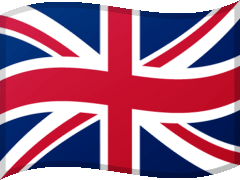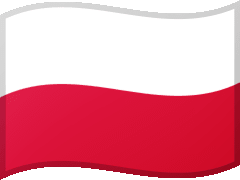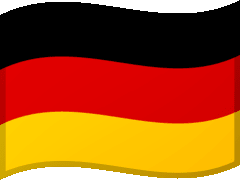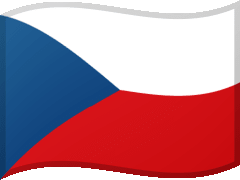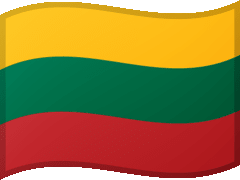The winds of change started to blow in the German Democratic Republic (GDR) in the middle of 1989, gaining strength under the influence of the accelerating process of disintegration of the socialist bloc in the countries of Central and Eastern Europe. In the summer, the citizens of East Germany, who spent their holidays in neighbouring countries, began to force their way to the premises of the embassies of the Federal Republic of Germany (FRG) in Budapest, Prague and Warsaw, in order to apply for the right to live in West Germany. Thousands of them also took advantage of the opening of the Hungarian-Austrian border to get to the FRG through Austria. At the request of German Chancellor Helmut Kohl on 10 September 1989, the Hungarian government allowed 25,000 refugees to be transported to West Germany using West-German railways. Mass escapes encouraged East Germans to take to the streets. When the wave of protests grew, on 17 October, the members of the Politburo of the Socialist Unity Party of Germany (German: Sozialistische Einheitspartei Deutschlands, SED) removed Erich Honecker who had been in power since 1971. He was replaced as a leader of the Communist Party by Egon Krenz. Despite this, the revolt continued to grow.
Then, on 9 November, at a press conference, SED spokesman Günter Schabowski mistakenly declared that the GDR's borders were being opened. Crowds of inhabitants of the capital city marched to the Berlin Wall to get to the other side. The opening of the border was a fact. The demolition of the wall, which was the strongest symbol and the most tangible manifestation of the cold war division of Europe, was declared. The suddenness of this historic event surprised German Chancellor Kohl during his state visit to Poland and made him interrupt his stay for a short time. In view of the upcoming changes, the Polish-German Reconciliation Mass, which took place in Krzyżowa on 12 November, gained an additional - European - significance.
When Chancellor Kohl arrived in the GDR on 19 December 1989 for his first visit, the crowds greeted him with cheers: ”Germany, one fatherland ” (”Deutschland einig Vaterland”). The polls said that over 70% of East Germans wished to unite with the FRG. Meanwhile, the talks of the SED leaders with the leaders of the largest democratic opposition organisations continued at the round table. Before they came to an end, on 15 January 1990, over 100,000 protesters surrounded the Berlin headquarters of the secret police - the Stasi. The crowd rushed inside and saved the huge archives of the political police from destruction.
Under the influence of the growing public pressure, a transitional government was formed on 28 January 1990. The head of SED in Dresden, Hans Modrow, became its prime minister. After taking office, the new prime minister presented the project of the re-unification of the German states to the People’s Chamber (the parliament of the GDR).
Meanwhile, Chancellor Kohl took diplomatic action to convince the leaders of superpowers to resign from the blocking of this process. He met the French President François Mitterrand, Soviet Union leader Mikhail Gorbachev and U.S. President George Bush (senior). Each of them expressed their understanding for the German aspirations, emphasising at the same time, the titles of the superpowers to decide in issues regarding Germany as a whole. The government of East Germany, in turn, received an offer from Kohl on 7 February 1990 to establish a currency union, which was to serve as another step towards the re-unification of both countries.
The negotiations were slowed down by parliamentary elections which were held in East Germany on 18 March 1990. Communists, who ran under the banner of the Democratic Socialism Party (PDS), were defeated. The parties originating from the democratic opposition also shared a similar fate, mainly because they were against the unification of Germany.
The elections were won by the Christian Alliance for Germany. The party and its leader, Lothar de Maizière succeeded owing to the support which was granted to them by Kohl.
Soon the chancellor of the FRG started to manifest even greater activity. In cooperation with the minister of foreign affairs and the main coalition partner, Hans-Dietrich Genscher, he decided to demonstrate initiative in the process of the unification of Germany. The reservations of the superpowers and the fears of Poland, which was anxious to confirm the inviolability of its western border, proved to be an overriding problem. These issues were settled during the negotiations held from May 1990 in the “2+4” formula. Their participants included: FRG, GDR and USA, Soviet Union, UK and France. Also the representative of Poland, i.e. the minister of foreign affairs Krzysztof Skubiszewski was invited to some of the July meetings in Paris as an observer, despite Kohl's initial doubts. The signing of the ”Treaty on the Final Settlement with Respect to Germany” took place on 12 September 1990. It opened the road to unification.
During those negotiations, on 18 May 1990, the governments of West Germany and East Germany signed an agreement on economic, currency and social union which came into force on 1 July. With it, the socio-economic revolution gathered pace in East Germany. By the end of 1990, almost 650,000 people had lost their jobs. At the same time, East Germans bought almost half a million second-hand cars in West Germany. The existence of the East German automotive industry came to an end. It was only thanks to the contract with Volkswagen, that the Zwickau-based factory which produced Trabant, was able to function until the spring of 1991. West German corporations also began to expand, taking over new market segments.
The complete restructuring of the East German economy was handled by the Trust Agency (Treuhandanstalt) established on 17 June 1990 . It took over the management of 14,000 state enterprises. Out of this number, 4,000 were liquidated and the rest were sold – above all, to investors from West Germany. Only 6% of the privatised companies ended up in the hands of businessmen from East Germany. At the same time, the government of the reunified Germany guaranteed permanent support to eastern Länder, which was to speed up their economic development and close the income gap between the populations. By 2009, two trillion Euros had been allocated from the federal budget for these purposes. In order to cover this expenditure in 1991, the solidarity tax (Solidaritätszuschlag) at a rate of 7.5% (reduced to 5.5% in 1998), on the income of natural and legal persons, was imposed throughout Germany.
The transformation of the state administration and justice system had also lasted since the autumn of 1990. By mid-1991, about 10,000 officials, judges and prosecutors coming from West Germany were employed in eastern Länder. Depending on the institution, they held from 80 to 100% of managerial positions. After decommunisation, only 18% of judges were of East German origin.
In the middle of the changes which were gathering momentum – in accordance with the Unification Treaty signed on 31 August in East Berlin - the official unification of both German states began. Just before midnight, on 3 October, the flag of Germany was hoisted on the Reichstag flagpole and the unification celebrations began. Since then, German Unity Day has been celebrated on this date. One day later, Lutheran pastor Joachim Gauck was appointed Federal Commissioner for the Records of the State Security Service of the former German Democratic Republic The Stasi files started to be archived and made available by an institution commonly referred to as the Gauck Agency.
The unification itself meant, in fact, the consent of the East German authorities to join West Germany, adopt the constitution which was passed in 1949 in Bonn and also recognise the federal state system. After this formal consent, a real, hard and long-term process of great transformation of the former GDR and of the unification of Germany commenced.
